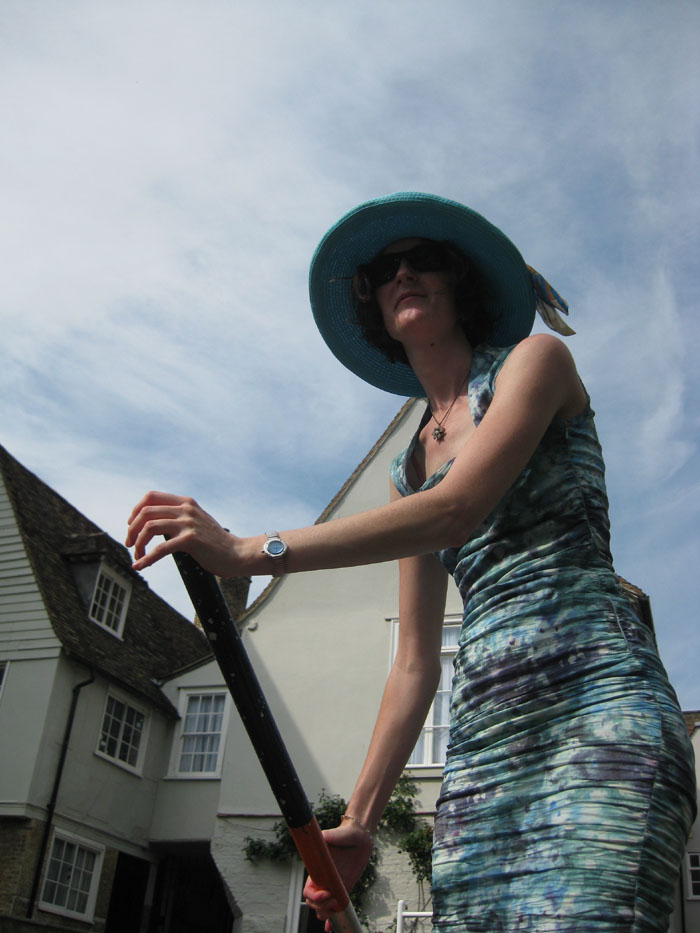My Hayfever Treatment Journey by Rachel Brown
Here at HayMaxTM we thought it could be useful and interesting to share the story of one woman’s hayfever treatment journey: how hayfever has affected her throughout her life, the impact it has had and her quest for effective treatment.
This is Rachel’s story: a 32 year old woman who has suffered from hayfever since she was a child and who has been seeking effective treatment for many years.
My Hayfever Treatment Journey by Rachel Brown
I have suffered from severe hayfever all of my life. My symptoms include uncontrollable runny nose, sneezing, itchy eyes, watery eyes, itchy face and throat. My season generally runs from March-August inclusive, although I have been known to suffer outside of those months, for example in February and September. My symptoms are at their most virulent during June, July and August. My symptoms start to build from March, increasing through April and May to peak in the Summer months.
I have tried many things to try to get relief and limit the suffering. As a child I took the liquid form of the antihistamine commonly known as Piriton and also tried homeopathic remedies as an older child. As a teenager I experimented with various combinations of antihistamine tablets, eye drops and steroid nasal spray. These provided very little relief, if any; and made very little difference to my suffering overall.
As you may know from your own experience of taking medications for hayfever; eye drops are fiddly and can only provide symptomatic relief at best: they won’t stop your eyes from itching in the first place, or halt those watery streams. And nasal sprays are notoriously difficult to administer. For me they also seemed to have little effect, if any on my symptoms and suffering. Having taken several different kinds of regular antihistamine prescribed by my GP (most are also available over the counter); I can say that these did very little, if anything at all to alleviate my symptoms.
I have also tried adapting my diet to include locally sourced honey, as it has been said that this can help build immunity to the pollen in your area, and foods like red apples containing quercetin, also thought to help with hayfever. I eat a fairly healthy diet anyway, including lots of fresh fruit and vegetables. I’ve never found this dietary element to have any noticeable impact on my hayfever.
Summer struggles…
Many a hot Summer’s day has seen me avoiding the wonderful outdoors to try to limit my suffering. Imagine the impact this can have on your social life; fitness regime and your ability to enjoy lovely Summer activities with family and friends. I remember a particularly horrendous experience of joining family at a July gig in Hyde Park which is obviously full of trees, and being in severe discomfort (uncontrollable itchy and watery eyes, runny nose and sneezing) for the entire time, and some time afterwards while the allergens are still present in the body.
I was first referred to an allergy clinic in my early twenties. The outcome of this was that I was given Zyzal, an expensive antihistamine only available if prescribed by a consultant. This worked for a period of two-three years (I was delighted!) but after that time I found that my symptoms returned with full force. I imagined that my body had become used to the medication, so the effect was significantly reduced. Whatever the reason, it stopped working after a time.
For a few years I went cold turkey and suffered. By my late 20’s I generally didn’t avoid my outdoor and social summer activities (running, walking, picnics, outdoor parties) and suffered as a result. I had an amazing experience on holiday in the Italian resort of Rimini where I didn’t suffer or experience any hayfever symptoms at all. I don’t know why this was, though I know being on the coast can really help with hayfever.
While some things worked for a time, nothing has worked consistently for any length of time. That’s why in my late 20’s I again sought a referral to an allergy clinic in Cambridge from my GP, with the hope of exploring Immunotherapy as a last resort.
The journey continued in my late 20’s, when I again sought a referral to an allergy clinic. These are held at many hospitals in the UK, and any allergy sufferer can request a referral from their GP.
Skin prick test
At the clinic a nurse will do a series of skin prick tests to establish exactly which allergens you are allergic to. I found that I’m allergic to grass, tree and shrub pollens.
The test is nothing to worry about. It involves a series of light needle pricks to put a small amount of concentrated allergen into your body. You can expect to wait around 10-20 minutes for the reactions to come up. These will start to tingle initially, and then become much more intensely stingy and itchy. A nurse then measures the extent of the reaction: the circumference of the red mark, and its height; and records this on your notes.
Taking a ‘mindful’ approach could help you to cope with these uncomfortable sensations. Try approaching the tingling/itchy sensations with ‘gentle curiosity’ to see if that is a technique that could help you feel better.
Then you should be seen by a Consultant, who will explain options for treatment. These will depend on your individual history. The postcode lottery is likely to affect your treatment options, as some Primary Care Trusts (PCTs) have funding for expensive treatments that others do not.
At the end of this process you may be offered Immunotherapy. This was my primary goal in going down the allergy clinic route second time round. For me, Immunotherapy is a little like the holy grail of hayfever treatments. While it’s the most extreme and a little invasive, the evidence shows that it works for the majority of people.
My understanding from my experience was that Immunotherapy would only be given to me once I had explored every other medical avenue and could say for certain this hadn’t worked for me. In practice that meant that my journey included an extra year, as there was confusion over the exact medication I was required and expected by the clinic to have taken.
It didn’t help that I also moved three times during the treatment, taking me in and out of two different PCTs, one of whom funds Grazax, and the other doesn’t. It was also a struggle to proactively keep myself in the system, as I was discharged a couple of times from the service during the whole process.
Either way, once you have seen your Consultant and he/she recommends your hayfever medications you can expect to take these for a full year (incorporating your next season) before returning to the clinic for treatment, whatever is offered to you, where you will be treated as an out-patient.
Immunotherapy is a treatment which involves putting increasing amounts of pollen into the body, to build the body’s immunity to it.
The NHS only treats for grass pollen allergy. They use Pollinex (injection of grass pollen) and Grazax (extract of grass pollen in tablet form).
Pollinex is also used in other countires. Pollinex-R is a ragweed pollen injection that is used abroad; and another Pollinex injection including grass, tree and ragweed pollen has been licensed for use in the US.
Regarding the postcode lottery for funding of Grazax, the tablet form of grass pollen extract: Grazax can also be bought privately, at a high cost. The tablet has to be taken every day for three years. You have to start it before your season begins, ideally three-four months before you first start experiencing symptoms. The Pollinex injections in the UK on the NHS are given as a course of 6, either weekly or every two weeks. Treatment continues for three years.
Common side effects of taking the grass pollen tablet include common cold; headache; prickling sensation, numbness of the skin, mouth and tongue; eye and ear itching; ear, nose and mouth inflammation; asthma symptoms: shortness of breath, cough or sneezing; dry throat; nasal discomfort, stuffy or runny nose; swelling of the lips or tongue; blistering or other discomfort of the mouth, tongue or throat; stomach pain or discomfort; diarrhoea, feeling sick, vomiting; heartburn; tiredness; chest discomfort or pain; fever; related itching like rash, nettle rash or eczema.
Side effects of the Pollinex injections are different. Patient information reads as follows: ‘The injection site may become slightly swollen and itchy for a few hours, and in some cases the swelling may last up to two to three days. These reactions generally improve once the top dose is reached. Some patients develop tiredness for up to 24 hours after the injection especially with the first few injections. Rarely, small nodules may appear under the skin at the site of the injection. These do not harm and the treatment may be continued. Occasionally, more serious reactions can occur such as a generalised itchy rash, asthma, itchy eyes or nasal symptoms. All these are readily treatable.’
As for my end to this story; I’ve found out that my PCT won’t fund Grazax, and that I can start Pollinex Injection Therapy now if I choose to. For me, this will be a choice based on many personal factors. I feel satisfied to have reached a resolution of treatment being offered to me, giving me some realistic options.











